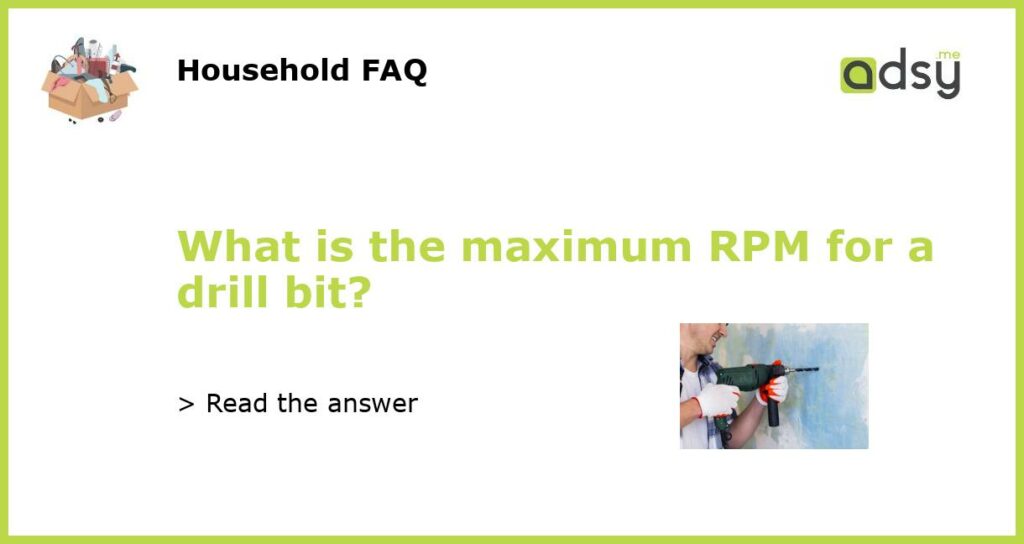What is the maximum RPM for a drill bit?
A drill bit is a commonly used tool in various industries and for various applications, from woodworking to metalworking. And like any tool, it has certain limitations and specifications that users must adhere to in order to ensure safe and effective operation. One important consideration when using a drill bit is its maximum RPM, or rotations per minute. The maximum RPM is the highest speed at which the drill bit can safely and effectively operate without causing damage to the bit or the workpiece. Let’s take a closer look at the factors that determine the maximum RPM for a drill bit.
Material and size of the drill bit
One of the key factors that determine the maximum RPM for a drill bit is the material from which it is made. Different materials have different strengths and heat resistance properties, which affects their maximum RPM. For example, a drill bit made of high-speed steel (HSS) can typically operate at higher RPMs compared to a drill bit made of carbon steel. Similarly, the size of the drill bit also plays a role. Smaller drill bits can generally handle higher RPMs compared to larger drill bits, as the larger surface area of the latter can generate more heat and stress at high speeds.
Type of drilling operation
The type of drilling operation being performed also affects the maximum RPM for a drill bit. For example, when drilling into a soft material like wood, higher RPMs are usually preferred to ensure efficient cutting. On the other hand, when drilling into a hard material like metal, lower RPMs are often recommended to prevent overheating and premature wear of the drill bit. It’s important to refer to manufacturer guidelines or industry standards to determine the appropriate RPM for specific drilling operations.
Power and speed control of the drilling machine
Another important factor that affects the maximum RPM for a drill bit is the power and speed control capabilities of the drilling machine being used. Different types of drilling machines have different maximum RPM ratings, and it’s important to select a machine that can safely accommodate the desired RPM for a particular drill bit. Additionally, using a machine with variable speed control allows for more precise RPM adjustments, which is particularly important when dealing with delicate materials or intricate drilling operations.
Cooling and lubrication
Cooling and lubrication also play a role in determining the maximum RPM for a drill bit. Higher RPMs generate more heat, which can lead to excessive wear and even damage the drill bit. Using cooling or lubricating fluids can help dissipate the heat and reduce friction, allowing the drill bit to operate at higher RPMs safely. The specific cooling or lubrication method will depend on the material being drilled and the type of drill bit being used.
Regular maintenance and inspection
Lastly, regular maintenance and inspection of drill bits are essential to ensure they are operating safely and effectively. Over time, drill bits can become dull or damaged, which can affect their maximum RPM capabilities. Sharpening or replacing drill bits as needed can help maintain their performance and prevent any incidents related to exceeding the recommended RPM.






